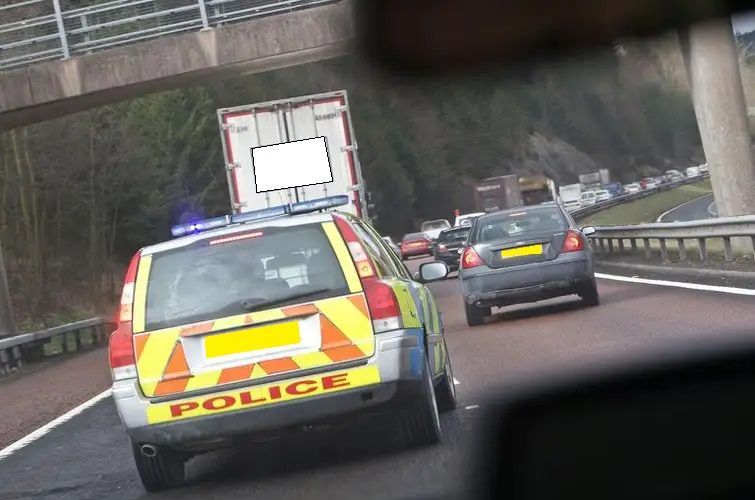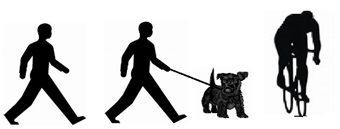Introduction
At this stage of your training your:-
- P.O.M routine (moving off)
- Improving clutch control
- M.S.M routine when stopping (including turning)
- Co-ordination of foot controls
- Steering to a safe driving position and pulling up on the left
- Gear changing up and down should now be getting more independent
- Adequate distance around stationary vehicles and slower moving vehicle (cyclists and pedestrians) should be nicely improving.
This brief is a continuation on your lessons and you will find this write up will be very informative on have L.A.D.A and M.S.P.S.G routines will improve your awareness and planning when behind the wheel when you are confronted with an emergency vehicle.
Agreed lesson is covering :-
Using the L.A.D.A and M.S.P.S.G.L routine's when driving around more complex junctions. This lesson you will be working on your independency when dealing with oncoming vehicles (including parked vehicles) and if possible (if the situation happens) reacting to any type temporary traffic lights and reacting in safe manor.
You will continue to develop with last lesson brief:-
- L.A.D.A & M.S.P.S.G routines (main road to side roads and side road to main roads)
- Two second gap
- Hold back position
- Meeting , overtaking, adequate clearance when overtaking stationary & slow moving vehicles
Agree level of instruction
Intervention
Agree on what part of the lesson is going to be a instructor-lead-lesson
and client-centred-lesson
and if it is client-lead
agree if the instructor has to intervein verbally, take control of the training vehicle by ether using the dual control or take the wheel the lesson plan may need to be changed until the fault is fixed.
F.I.S.H
Fault
Implication
Solution
Help
Lesson aims and strategies
The aim of today’s lesson is for you
and your instructor
to disuse reducing their support and which areas you have both agreed to work on independently. Working on independency will fine tuning you’re forward planning with the use of L. A. D. A
and M.S.P.S.G
routine's and work on your defensive driving skills
(your ability to recognise potential hazards early and to take appropriate defensive action safely).
The key to this lesson is for you to see, react to minimise potentially hazardous situations
by acting defensively, safely while being courteous towards other road users. Looking well ahead and negotiating different road marking, signs, other road users, junctions, obstructions, pedestrians and when the inevitable happens emergency vehicle's (reading the road or anticipation and planning) is a must needed skill to drive safe.
Risk responsibility objective's
You and your instructor will agree lesson plan support to ether:-
- Full talk through
- Prompt
- Independent
This is important to ensure that the instructor and student understands who has the main responsibility on the control of the training vehicle on the set lesson plan.
Your level of instruction will be given by your instructor to a level to suit you from full talk through then reducing your support to either prompt or independent.
Highway code rule 219
What should I do when there's an emergency vehicle is approaching you?
When there's an emergency vehicle coming towards you with flashing blue lights behind you -
what do you do?
Highway code rule 161 - Use of mirrors
All mirrors should be used effectively throughout your journey. You should:-
- use your mirrors frequently so that you always know what is behind and to each side of you
- use them in good time before you signal or change direction or speed
be aware that mirrors do not cover all areas and there will be blind spots. You will need to look round and check.
Below are our steps to keep you safe and legal when letting an emergency vehicle pass...
Highway code rule 219 states - You should look and listen for ambulances, fire engines, police, doctors or other emergency vehicles using flashing blue, red or green lights and sirens or flashing headlights, or traffic officer and incident support vehicles using flashing amber lights.
When one approaches do not panic
Consider the route of such a vehicle and take appropriate action to let it pass, while complying with all traffic signs.
If necessary:-
- Use your mirrors
- Signal.
- Slow down or stop (each situation will be different so do the safest thing)
Remember: Mirrors – Signal – Manoeuvre
Pull to the side of the road
When planning to your safe position try to avoid stopping before:-
- A brow of a hill
- A bend
- A narrow section of road.
Do not endanger yourself, other road users or pedestrians and avoid mounting the kerb. Do not brake harshly on approach to a
junction or
roundabout, as a following vehicle may not have the same view as you.
Can I get a fine for stopping for an emergency vehicle
When you suddenly see
blue flashing lights behind you, an emergency vehicle is approaching. Most drivers will recklessly move out of the way, unfortunately doing this can
lead to a fine if you do it incorrectly.
What should I do if there’s an emergency vehicle behind me?
Always take action to let the emergency vehicle pass, but the most important thing is to remember that you need to keep within the letter of the law in doing so.
- If you jump a red light to make space, you’ll still be breaking the law and are likely to be prosecuted.
- The same goes for entering a bus lane or yellow box junction.
In a court of law, it will be up to you to prove that the reason you broke the rules of the road was to clear a path for an emergency vehicle. And even if you succeed in doing this, there's the potential for months of worry beforehand while you wait for your day in court.
Strategy
You should be constantly
looking
ahead, beside and definitely behind and listen for ambulances, fire engines, police, doctors or other emergency vehicles using flashing blue, red or green lights and sirens or flashing headlights.
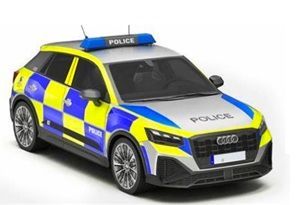
Slide title
Write your caption here
Button
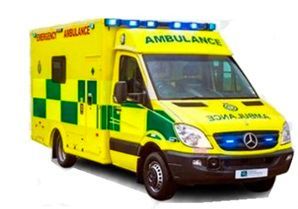
Slide title
Write your caption here
Button

Slide title
Write your caption here
Button
What colour lights on vehicle?
Emergency vehicles?
Blue
Doctors vehicles?
Green
Maintenance vehicle?
Amber
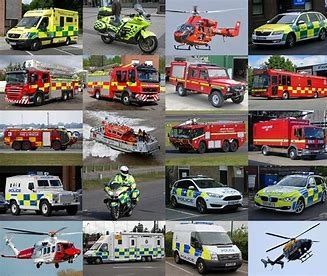
Slide title
(Blue) emergency vehicles
Button


Slide title
(Amber) maintenance vehicles
Button
Highway code rule 219 Emergency vehicles
You obviously do not just look for emergency vehicles when your driving
Always look ahead for different signs and information...
Pedestrians
The Highway Code explains that pedestrians most at risk on the road are the over 60 and (secondary children) 15 year olds. WHY?
Senior citizens
- Older people do not judge speed and distance very well and their reactions can be slow. Ask yourself - Have they seen you? Can they hear you?
- Look for clues - Are they carrying a white stick?
- Or even a white stick with bands round the stick?
- Are they looking your way? And so on....
- If there are pedestrians about make sure that you know what they are going to do before they do it.
Secondary school children
Kid love to fool around, from walking slowly across the road because they know we have to slow down to pushing each other for fun; it’s too easy to pushed into the road and cause an accident.
Children have no sense of danger and road users have to be very observant around them.
Cyclists/E-bikes (scooter)
Also the kamikaze cyclists, the go from the pavement to road then back on to the pavement and so on, so be very careful with cyclists on the pavement.
The new issues are the e-bikes and scooter that zoom around at 15/20+ MPH they are silent and unpredictable, even reversing out of a driveway you could meet one on a pavement.
Animals
Vehicles can easily frighten animals therefore drive wide and slowly past them. Don’t sound your horn or rev up the engine and always keep
your distance. Watch their behaviour carefully and particularly if it is a horse being rode by a child.
Highway code rules 47-58 animals
Highway code rule 59-82 cyclists
Cyclists
A cyclist will wobble when on a road they could also be coming to an end of a cycle lane and be merging onto your road (L.A.D.A).
There are all ages of cyclists on the road, so if someone is pedalling show respect and give them space and hold back accordingly. If you have a faster cyclist in front of you again be patient and over take them when its safe.
Always look for clues about their next move.... for example a cyclist who looks over his or her right shoulder may be about to turn right.
There may even be a puddle or pot hole ahead of them in the road this will also cause the cyclist to move out.
Cyclists are not easy to see and they can easily get lost in the blind spots of your vehicle. Particularly out watch for then in slow moving traffic, built up or even areas they may overtake you on either side when you least expect.
Do you know the new 2023 rules on cyclist laws?
Highway code changes January 2023
Motorcyclists
Motorcyclists are not easy to see particularly at dusk and at night.
They may also take up unusual road positions to avoid holes and bumps in the road surface.
It is very easy to miss an approaching motorcyclist when emerging at junctions so remember…..Think once, think twice, think bike!
Drivers
If you are unsure about what a driver is going to do next leave plenty of space between you and them.
A sporty looking custom car may be driven by someone more interested in posing than driving!
Large vehicles
Buses and large vehicles need more room and may take up unusual road positions to turn round corners at junctions.
Hold back and give them plenty of room.
Inconsistent behaviour
For example a bus is signalling left prior to a side road that you intend to emerge from doesn’t mean that you should go on the assumption that the bus is turning left?
- Look to see if all the actions of the driver are consistent with the signal
- Is the vehicle slowing down?
- Is their position consistent with the proposed manoeuvre?
- Is the driver looking in the direction they intend to turn?
- Could the driver be signalling left for a purpose?
In the above example the bus driver is signalling left to pull up at a bus stop just after the side road.
Make sure you look at all the evidence before you finally decide to pull out the side road.
Thinking ahead
Consider what you can see that other drivers cannot see.
This may play an important part in determining what may happen next.
You’re on an open road travelling at 60 mph there are two cars ahead of you. You see the 1st cars brake lights come on! Your instinct should to check your mirrors and come off the gas pedal.......... As the 2nd car may have his mind on other things and may not react to the last minute!
The weather and visibility
All weather conditions can severely affect visibility therefore remember to slow down and give yourself more space and time.
At dusk and at night the driver loses the ability to see any detail and dark objects easily merge into the background.
Consider not only how this may affect your judgment but also how these conditions may affect other drivers.
Are other drivers being blinded by bright sunlight or at night by headlights on full beam?
Are the windows of other vehicles misty? Can the driver see you?
Will the high sided vehicle in high wind remain stable when it crosses a gap in the hedge or buildings?
Also remember the effects of water, ice and snow on the road surface.
Are the other drivers driving too fast for the weather conditions?
Are you driving too fast for these conditions?
Highway code rule 226-237 weather conditions
Always be seen
Driving defensively is all about giving yourself time to react and keeping your options open, you may think you have lightning fast reactions but without being aware of potential dangers you will need more time to react and this is what we are working on here with your thought process.
Always maintain a safe road position that allows you to see and be seen and always be able to see the vehicles drivers side (offside) mirror of the vehicle in front as if you can not see their drivers door mirror they might not be able to see you. As their rear window could be obscured of objects or it could even be a bus or HGV with no rear window
Stay focused
Always focus on the driving task and never let your mind wander. Keep your eyes moving and scan the road well ahead, however avoid staring at any single point ahead or to the side. By now you should recognise and be sensing what is and what is not important.
For example - Identifying pedestrians, cyclist, drivers, even the make and model or the colours of vehicles (that stand out and even loud) is useful. Also concentrate on the position, speed and potential course of other vehicles and/ or pedestrians both to the front, rear and sides of your vehicle. Look as far down the road as you can see for any potential hazards whether they are static road features or situations being caused by other road users.
A gap in the tree line ahead may mean that there is a side road at that point or an upside down triangle sign in the distance may warn you that you are approaching a T Junction and so on.
Initially you may perceive risks that are not really there or indeed ignore risks that are.
With experience you will begin to develop your own judgment in this regard.
Apply the hazard drill in good time
Each time you are presented with a potential or actual hazard on the road (i.e... anything that may require you to have to change your speed, position or direction) you will go through the L.A.D.A and hazard routine a minimum of 3 times.
While each step of the drill needs to be considered in the order (shown above) it need not necessarily be acted upon in full.
What we mean by this is your brake lights are the signal
so mirror signal
(with brake lights) manoeuvrer not mirror indicator manoeuvrer
Observations to the front, behind and what is overtaking you should be thought about throughout the application of the drill.
Space to the sides
Make sure that you leave enough room for pedestrians, cyclists, motorcyclists and other vehicles.
If you are unsure whether or not you will fit through a gap, you won’t! Give parked cars and pedestrians at the side of the road plenty of clearance. Remember pedestrians are far more vulnerable than vehicles.
At 30 MPH allow for car doors opening (1metre) for children are appearing from between parked cars or pedestrians wandering onto the road particularly in crowded streets.
Position your car accordingly and reduce speed as the space to your sides is reduced.
Agree your next lesson
learning techniques and strategies
Practice achieving and improving the M.S.P.S.G & L.A.D.A routine's at junctions while improving your awareness and planning with the road ahead.
Once you have practiced a few situations a few times your instructor will reduce his/her support transferring his responsibility over to you (that's if you agree with this).
Lesson Planning
- Agree learning goals and needs of todays lesson
- Agree appropriate lesson structure (full, partially or independent level of instruction)
- Practice in a suitable training area
Agreed if needed to adapt the lesson plan to help the pupil work towards their new learning goals if any verbal or physical intervention was made by the instructor
Risk Management
Fully understood how the responsibility for risk of the lesson would be shared on the lesson plan between instructor and student.
- Directional instructions will be given in ADI format (Alert, direction and identify manor) given to the pupil clear and given in good time
- Agree if the students made a minor, serious or dangerous error on your lesson it will be broken down using F.I.S.H (fault, implications, solution & help) this method of feedback helps pupils understand what fault is being made and how to strategies on how correct the faults.
Teaching & Learning Strategies
Like mentioned earlier every student is induvial and each and everyone of you will progress at different rates so driving will adapt their lesson plan to help you achieve your driving goals.
- Your driving instructor will adapt their teaching style to suite your ability and ability
- Your driving instructor will continue to encourage you on your lesson and analyse any problems made and allow you to take responsibility for your own learning goals by giving you technical information to improve your techniques. Your technical feed back from your instructor will be ether given on the move or if feel needed by pulling you up on the side of the road somewhere safe, legal and convenient.
Rote learning (WikipediA)
Rote learning is a memorization technique based on repetition. The method rests on the premise that the recall of repeated material becomes faster the more one repeats it. Some of the alternatives to rote learning include meaningful learning, associative learning, spaced repetition and active learning.
At the end of your lesson
At the end of each lesson you will have a debrief with your instructor giving you the opportunity to reflect on your performance on your lesson then you can set up new goals for your next driving lesson.
This will also give you the opportunity to research any new topics that will be brought into on your next agreed lesson.
